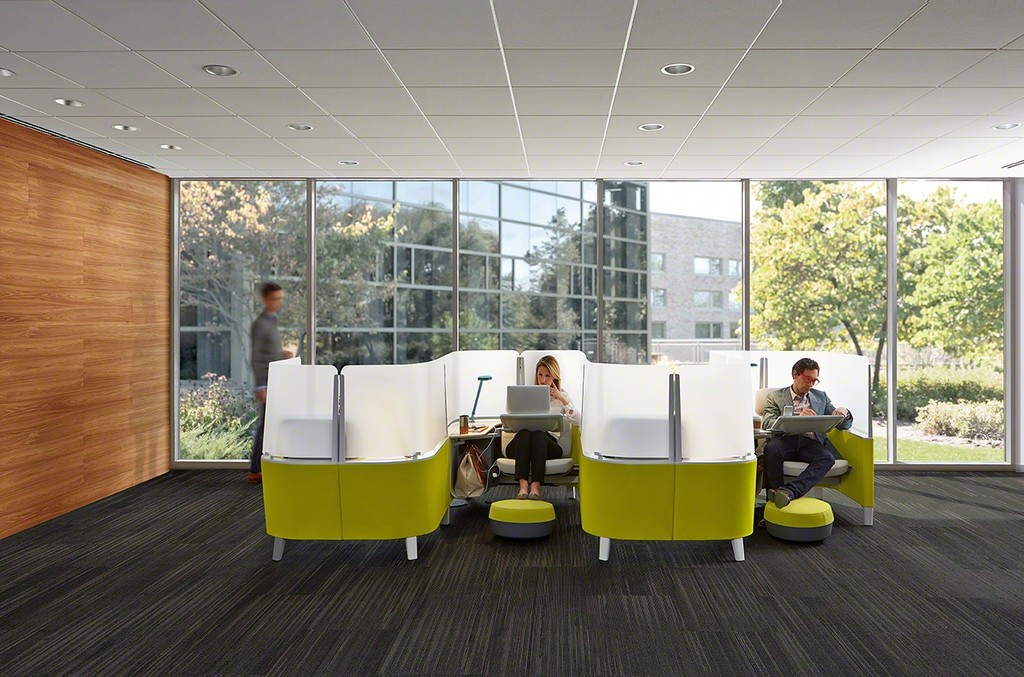
Farewell...
Workspring has chosen not to renew its lease in downtown Chicago. It has been our team’s pleasure to provide thousands of training, brainstorming and strategizing experiences to companies across the globe, and we are grateful to all of our customers. If you need to contact us, email info@workspring.com.
Conference Crisis: People Need Privacy, Place Can Help

Conference attendees typically have very busy schedules chock full of planned activities from breakouts and keynote sessions to networking gatherings and more. In a highly charged, highly intense environment, people end the day exhausted and more than ever need privacy and space to recharge. This is a topic close to the hearts of Workspring – a work hospitality and experience design brand of Steelcase focused on helping you achieve critical meeting goals.
Oftentimes, conferences and events are not set up to support the notion of privacy or focus time that would revolutionize people’s perceptions, performance and participation at these important happenings. According to Susan Cain, author of the bestselling book Quiet: The Power of Introverts in a World that Can’t Stop Talking, many people perform best when others are not constantly around them. Without question, successful networking requires giving attendees easy access to one another – but also offering individuals the time and place to refocus and relax in solitude. Delivering on privacy is a necessity. “The need for privacy – at work as well as in public – is as basic to human nature as is the need to be with others,” explains Donna Flynn, director of the Steelcase WorkSpace Futures research group (a team of strategists and researchers focused on the future of the workplace and beyond).
 PRIVACY AREA
PRIVACY AREA
With so many things competing for one’s attention, people are forced to deal with near constant stimulation… leaving little room to locate or tailor an environment to suit mood or the need for privacy.
So, how might you leverage your conference spaces to support privacy and people’s need to decompress? And how as a meeting planner can you not only be mindful of behaviors seen at events, but be proactive in best supporting basic human needs and the natural ebb and flow of human interaction throughout the day?
EMPOWER YOUR ATTENDEES WITH VERSATILE SPACES:
Focus or Quiet Areas – It’s a fact, sometimes event attendees need quiet time with no one around amid the hustle and bustle. Because we live in a world where work happens anywhere, your guests automatically become mobile workers at these events. Have you ever needed to quickly send out a note to your boss during a conference? It happens. Focus and quiet areas allow people to comfortably get work done within the facility, as well as indulge in much needed alone time. When creating these dedicated places, ensure they are free from distractions – even prohibiting the use of phone conversations.
 Phone Booths or Dedication Phone Areas – People don’t let high traffic areas prevent them from holding phone conversations – or perhaps they just don’t have another option. Imagine how dedicated areas for phone calls would improve the attendee experience, enriching impressions and overall satisfaction.
Phone Booths or Dedication Phone Areas – People don’t let high traffic areas prevent them from holding phone conversations – or perhaps they just don’t have another option. Imagine how dedicated areas for phone calls would improve the attendee experience, enriching impressions and overall satisfaction.
Nap Room – While a nap room may not be viable at every conference, it certainly would attract global event goers traveling from afar and suffering from jet lag and significant time zone differences. Offering a nap room at your event expresses empathy and understanding. For instance, at a recent TED event, the Steelcase Workspring team created such a room that was used for naps and respite, and was also utilized by some as a place for meditation. For a heightened experience, consider engaging the senses by dimming the lights, playing soft Zen music or including scented lavender candles to sooth anxiety or relieve stress.
More is Better – For optimal outcomes, we suggest providing a variety of open and private spaces to accommodate both planned and impromptu meetings. After all, variety is key, and even small-scale adjustments can make a room harder working and more beneficial. Attendees will feel valued because choice, control and their time are being acknowledged (hint: Flexible, purposeful and well-designed spaces can save attendees a step by not having to reserve a room at your venue in advance for a specific need)! It’s this menu of options that make it easier for attendees to interact, recharge and be well. And of course, happy attendees equates to positive reviews, referrals and the likelihood of returning next time.
As researchers from Steelcase synthesized insights around the privacy paradigm, it became evident that supporting wellbeing and privacy needs at conferences and events require environment diversity. People need privacy for different reasons and timeframes – it may mean finding a spot to sit and focus for an hour or locating an area to calm the mind for just 10 minutes amid the chaos.
To learn more about this compelling topic or to engage with Workspring for help planning spaces that meet your goals, connect with Mary Cook at mtran@workspring.com.
